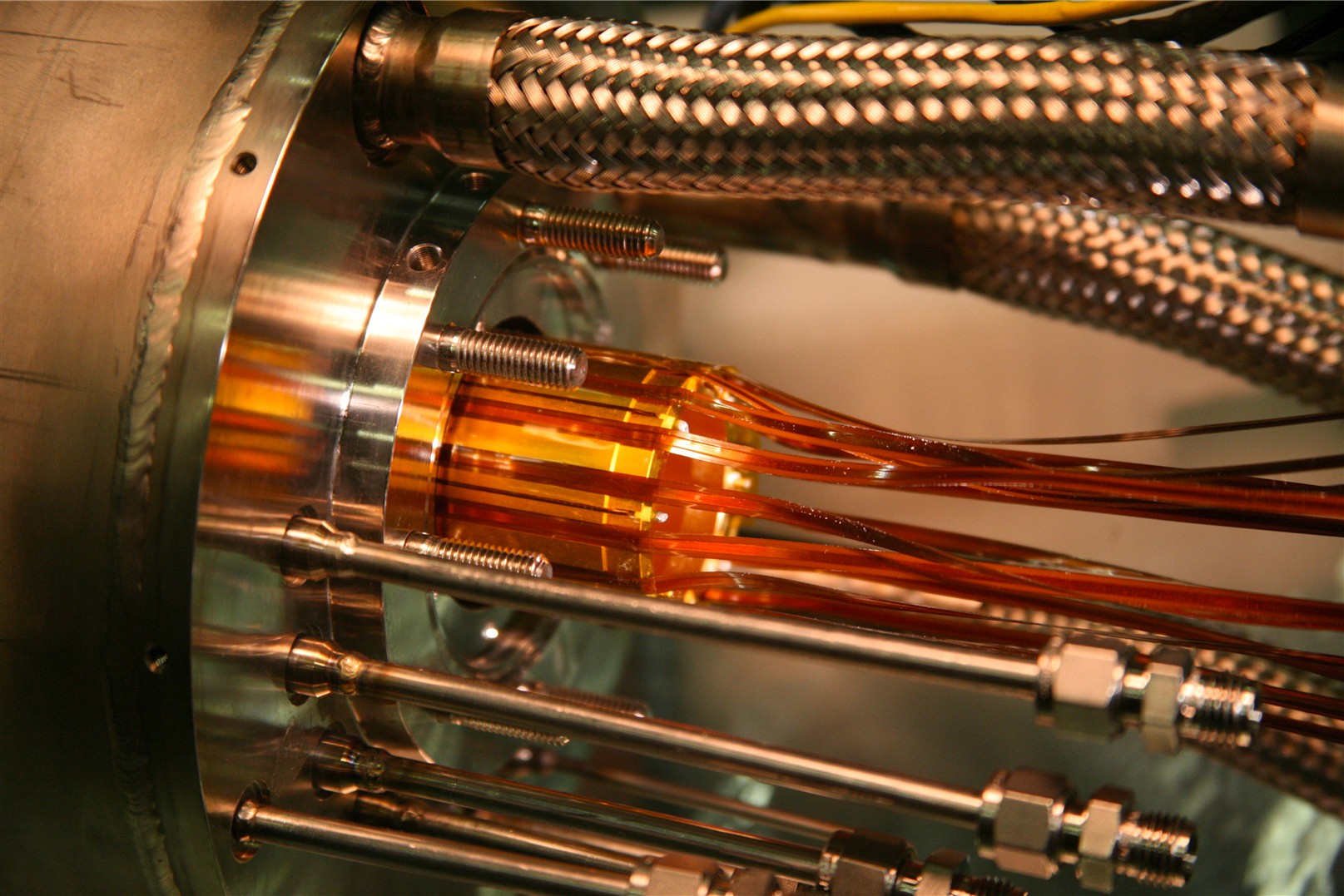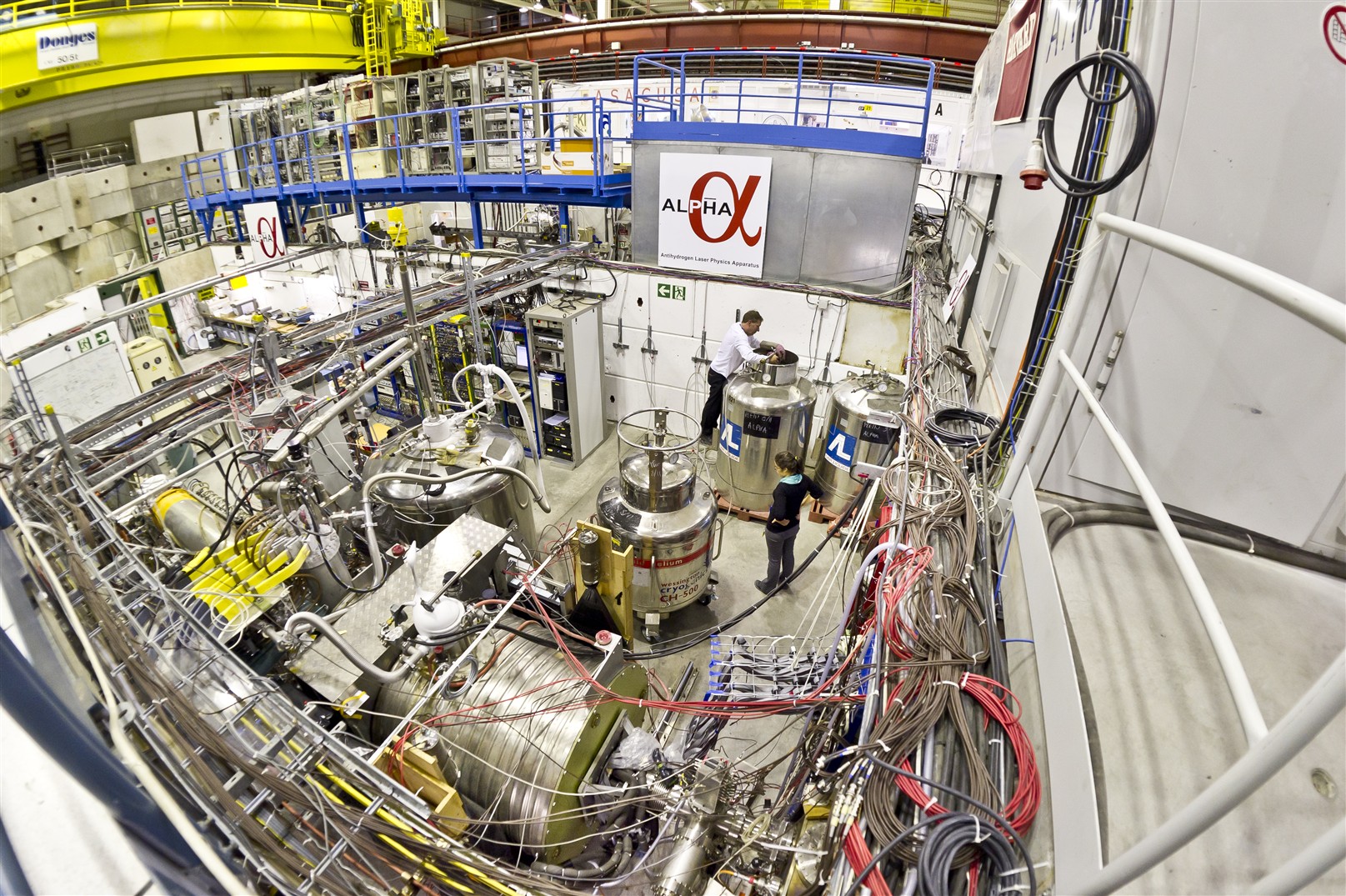Antimatter Atom Measured for the First Time

Scientists have taken the first-ever measurement of an atom made of antimatter.
This measurement, though not very precise, represents a first step toward being able to study antimatter atoms in detail — a goal necessary for understanding why the universe is made of matter and not antimatter, its mysterious sibling.
All particles of matter are thought to have antimatter partners with the same mass but opposite charge. When these pairs meet, they annihilate each other to become pure energy.
Scientists think the universe contained equal parts of matter and antimatter just after the Big Bang, which is believed to have started everything 13.7 billion years ago. But early on, most of the matter and antimatter destroyed each other, leaving behind a slight surplus of matter that became the stars and galaxies that exist today.
Why matter won this cosmic duel is a mystery.
Antimatter trap
In a previous study, physicists at Switzerland's CERN laboratory succeeded in trapping antihydrogen atoms for several minutes by using magnetic fields to keep them suspended in one spot.
Get the world’s most fascinating discoveries delivered straight to your inbox.
An antihydrogen atom is the analog of hydrogen, the simplest atom among the elements. Where hydrogen contains one proton and one electron, antihydrogen is made up of one antiproton and one positron (the antimatter partner of the electron). [Wacky Physics: The Coolest Little Particles in Nature]
In the new research, physicists found they could beam microwave light of a specific frequency at an antihydrogen atom, flipping its spin. This causes the particle's magnetic orientation to change, and the magnetic trap that held it no longer works. The antiatom is free to fly off and hit the walls of its trap, which are made of matter. When it collides with an atom in the wall, the antiatom is annihilated along with the atom, creating a signature that the physicists are able to detect.
"We have made a measurement," said Jeffrey Hangst of Denmark's Aarhus University, spokesman for the CERN laboratory's ALPHA experiment. "Precision-wise, it doesn't compete with matter, but it's the only one that's ever been done on antimatter."
The experiment proves it's possible to change an antiatom's internal properties by shining a light on it. This is the first step toward applying a detailed method of measurement called spectroscopy, which involves tuning the light to a very specific frequency so that it can excite the antiatom's positron to a higher energy level, or orbit. After the excited positron jumps to a higher orbit, it will fall back and emit the extra energy as light, and scientists will measure the light's frequency.
Antimatter spectrum
"We are now in the business of doing antimatter spectroscopy," Hangst told LiveScience. "Now we just push forward to make it more and more accurate."
The best current theory of particle physics is called the Standard Model, and it predicts an identical spectrum from hydrogen and antihydrogen. Scientists must precisely measure the true spectrum of antihydrogen to compare the two and test this theory.
"We're looking for very small changes that manifest in different new physics between the two," Hangst said.
If they find them, they may be closer to solving one of the ultimate cosmic quandaries.
"We know there's something we're missing," Hangst said."We know that we don't understand everything about antimatter because we can't explain what happened to it after the Big Bang."
Physicists' best guess is that the two particles behave slightly differently, for example, by decaying at different rates.
The researchers reported their findings online today (March 7) in the journal Nature.
You can follow LiveScience senior writer Clara Moskowitz on Twitter @ClaraMoskowitz. For more science news, follow LiveScience on twitter @livescience.




